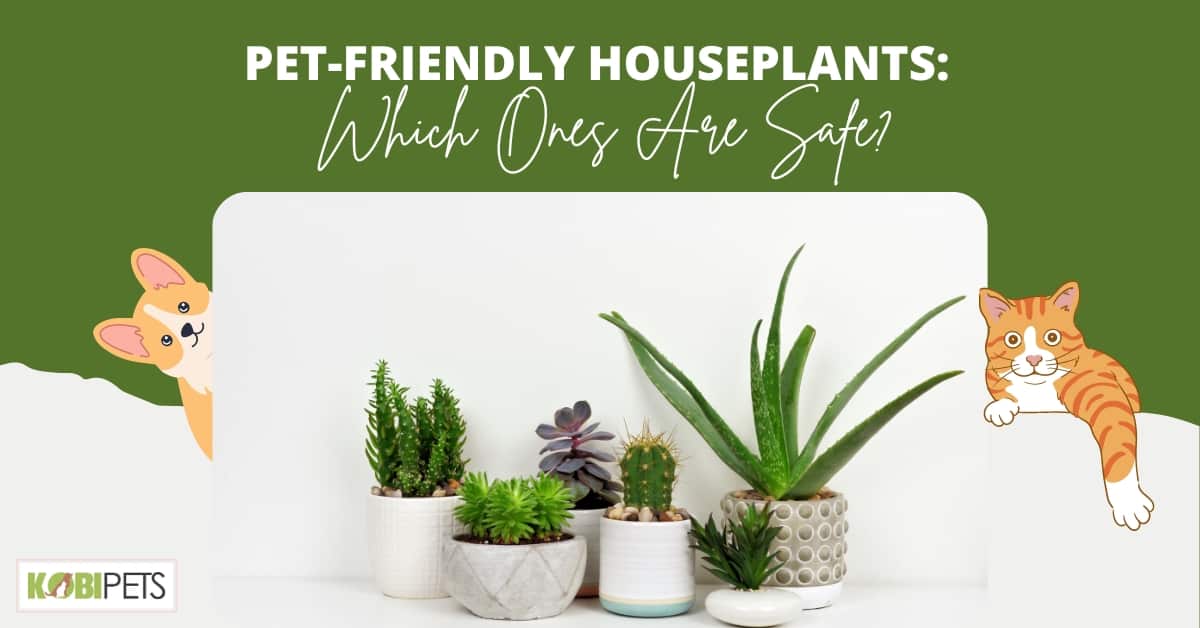
Introducing a furry friend into your home can be an incredibly enriching experience. But as any pet owner knows, having a pet also requires some extra safety measures to ensure they’re not coming into contact with any potentially harmful items or substances.
Non-toxic plants like the Rattlesnake Plant or Spider Plant are both ideal options in households with pets because they contain no harmful toxins. You should also avoid plants such as dieffenbachia, which can cause irritation and rashes if ingested.
In this blog post, we’ll discuss some of the best pet-friendly houseplants that will bring life and color to your home, without posing any health risks to your furry friends. Keep reading to learn more!
What is a Pet-friendly Plant?
A pet-friendly plant is any plant that poses no harm to animals if ingested. While there are plenty of plants out there that can be toxic for pets, there are also a variety of options available specifically designed with your furry friends in mind. These plants typically have non-toxic or even medicinal properties and come from species like bromeliads and philodendrons. These plants are also easy to care for, and some can even help purify the air in your home.
When searching for pet-friendly plants for your home, you must do your research ahead of time and find out what type of plants are safe for your particular pet. This can help you avoid any potential surprises down the line and ensure your pet’s safety. It’s also important to regularly inspect your plants for signs of damage or deterioration, as this can indicate that they might not be safe.
Finally, it’s a good idea to choose plants with thick leaves or fuzzy textures, as these are harder for animals to chew. If your pet does happen to ingest a plant, keep an eye out for any concerning symptoms and contact your vet if needed. With the right precautions, you can enjoy the beauty of houseplants without worrying about their safety around your pets.
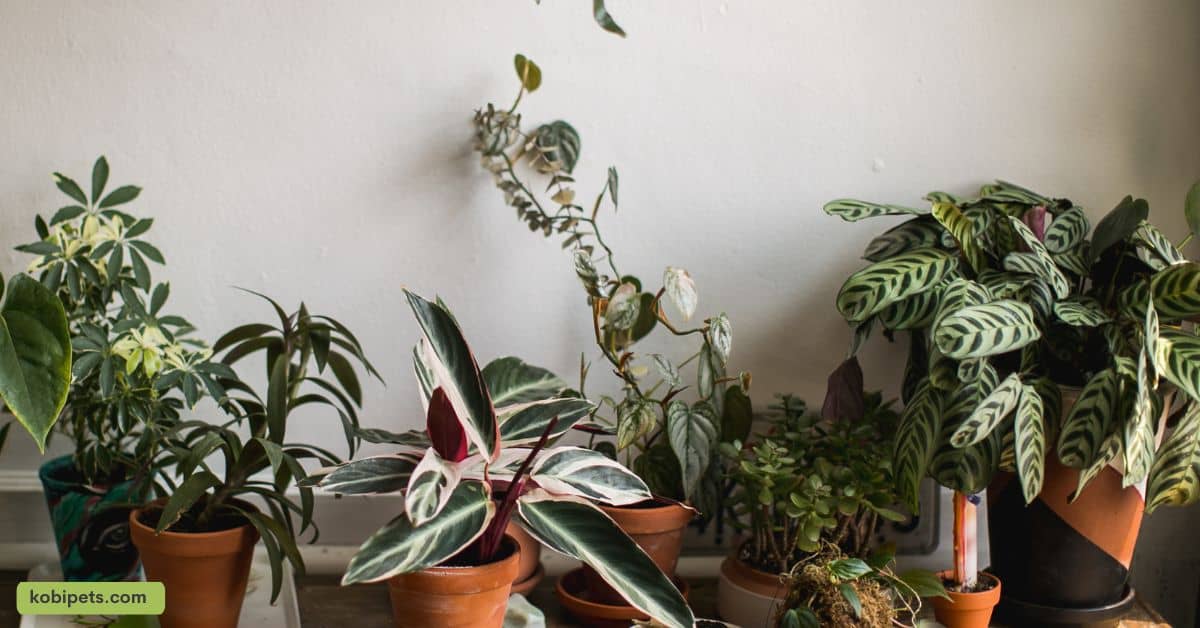
Benefits of Having Pet-Friendly House Plants
Many pet owners are turning to house plants to spruce up their homes, but it can be difficult to pick out the ones that won’t harm your beloved animal companions. Fortunately, there are plenty of pet-friendly house plants available that can provide your home with beauty and fragrance without putting your pets at risk. Here are just a few of the benefits of having pet-friendly house plants:
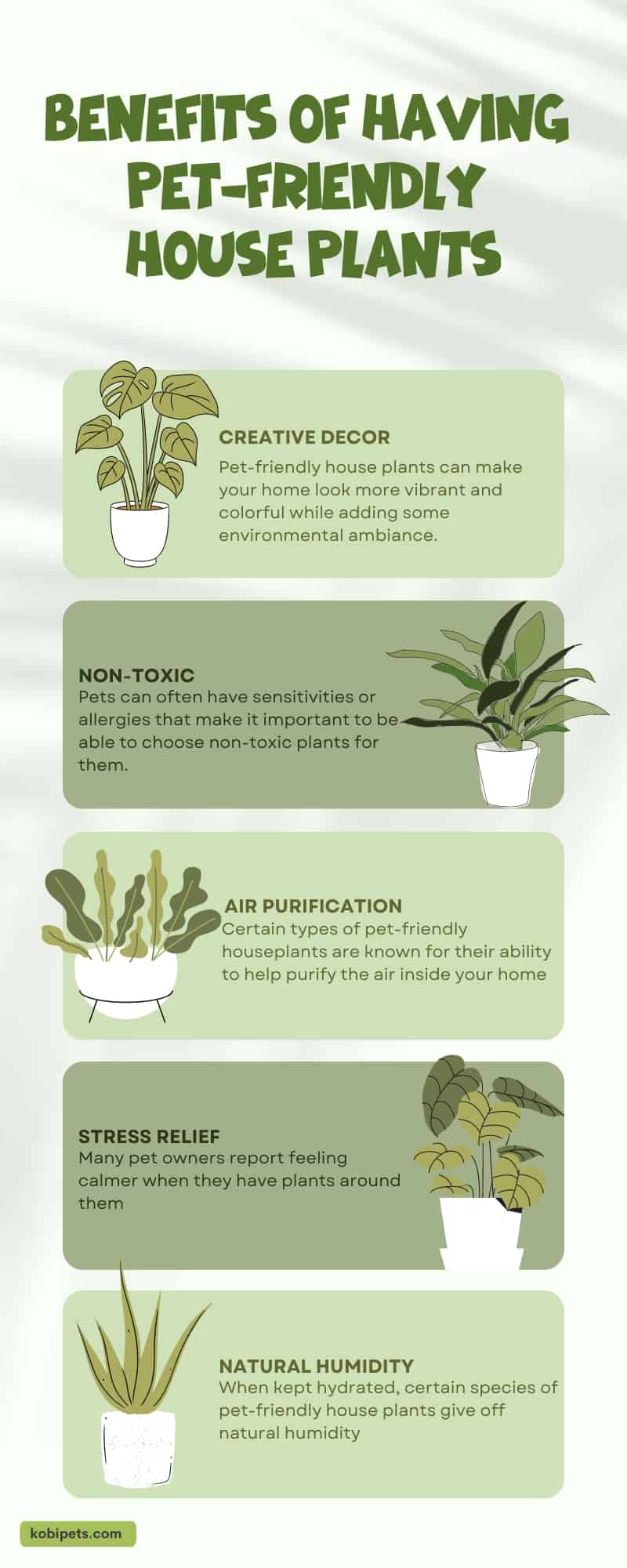
Benefits of Having Pet-Friendly House Plants
Creative Decor: Pet-friendly house plants can make your home look more vibrant and colorful while adding some environmental ambiance. They come in all shapes and sizes, making them easy to find something that fits the aesthetic you’re going for in any room.
Non-Toxic: Pets can often have sensitivities or allergies that make it important to be able to choose non-toxic plants for them. Look for pet-friendly species when shopping so you don’t have to worry about exposing your animal companion to harmful chemicals or toxins.
Air Purification: Certain types of pet-friendly houseplants are known for their ability to help purify the air inside your home by absorbing pollutants like formaldehyde and benzene, which is especially helpful if you have indoor pets who spend a lot of time curled up indoors.
Stress Relief: Many pet owners report feeling calmer when they have plants around them, making them particularly beneficial if you have an anxious or stressed-out pet living with you in your home. A little bit of greenery may be just what they need!
Natural Humidity: When kept hydrated, certain species of pet-friendly house plants give off natural humidity – something especially nice during dry winter months for those with indoor animals who may suffer from dry skin conditions or other issues associated with low humidity levels indoors.
Overall, having pet-friendly houseplants can be a great way to add some life and color to your home while keeping your pets safe. Be sure to always check with your veterinarian beforehand if you have any concerns about the toxicity of a particular plant species. With the right research and precautions, you can enjoy the beauty of plants without worrying about their safety around your pets.
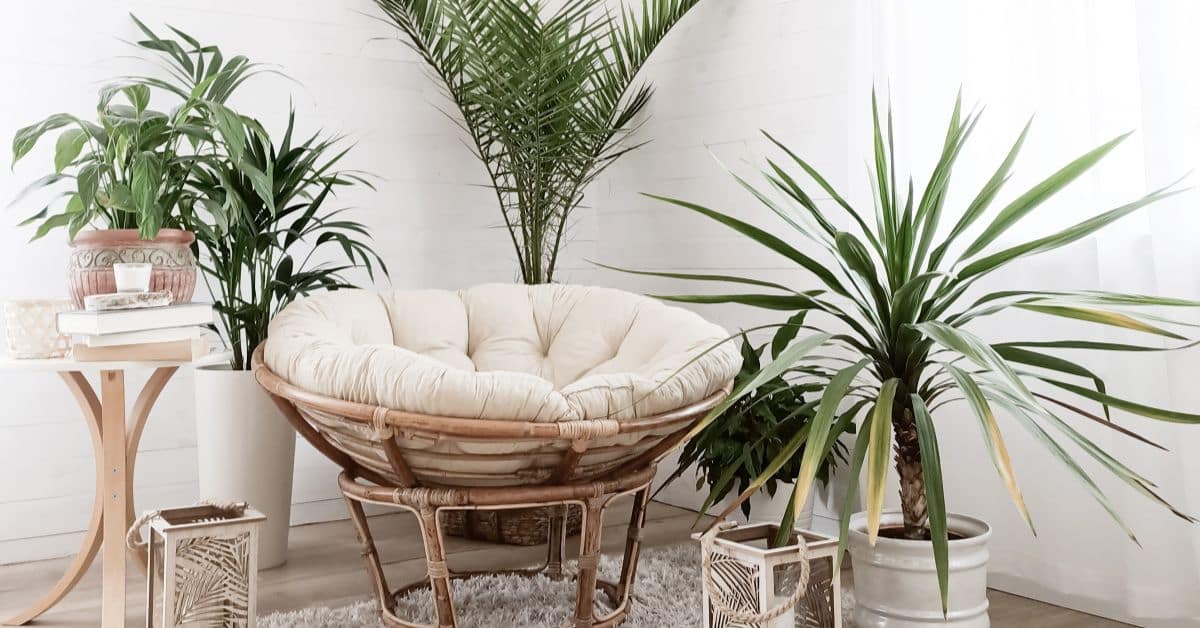
Types of Houseplants That Are Safe for Pets
When it comes to choosing pet-friendly houseplants for your home, there are a variety of options available. From popular choices like spider plants and spider plants to lesser-known varieties such as baby’s tears and gloxinia, these pet-friendly plants come in all different shapes, sizes, and colors. Here are some of the most popular types of pet-friendly houseplants available:
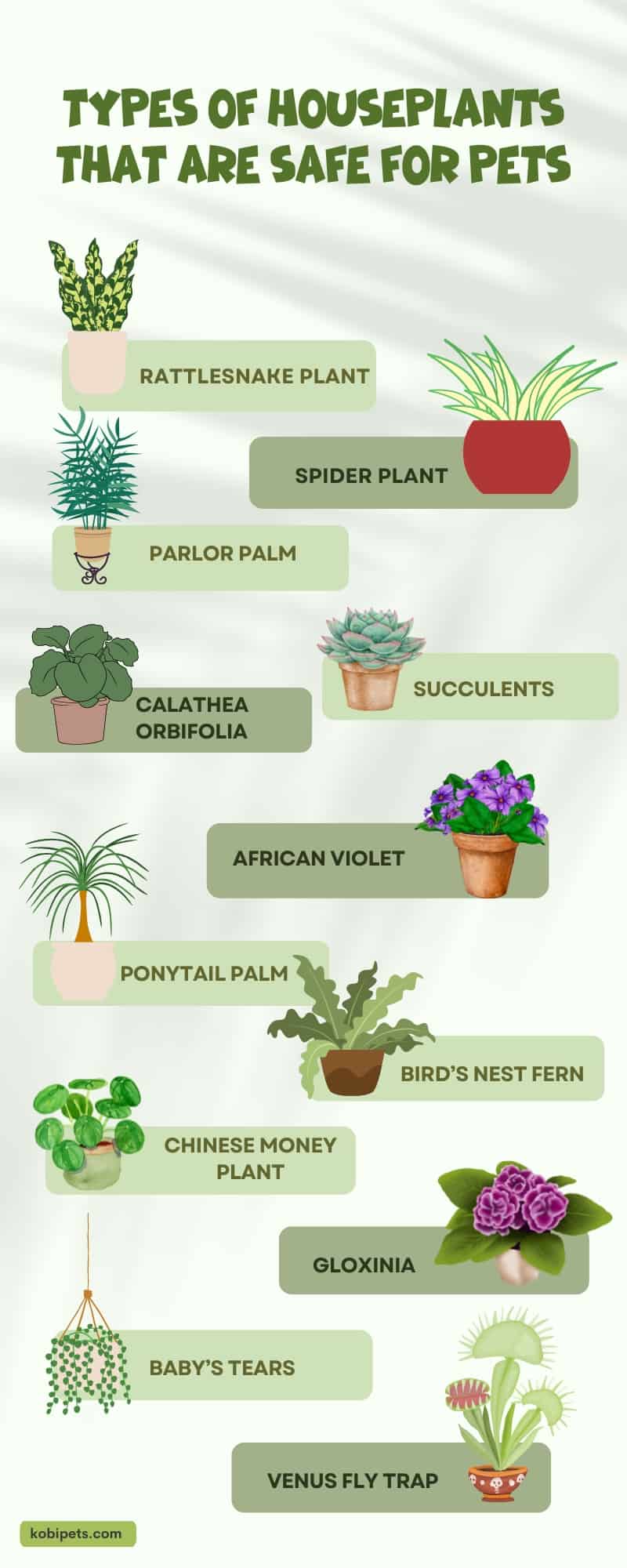
Types of Houseplants That Are Safe for Pets
1. Rattlesnake Plant
The Rattlesnake Plant is a stunning houseplant that has become increasingly popular in recent years. Native to tropical rainforests of Central and South America, this vibrant plant features long snake-like foliage with rich green, yellow variegated leaves.
Not only does it add a beautiful aesthetic to any indoor space, but it’s also uniquely pet-friendly. For anyone looking for a low-maintenance and easy-to-care-for plant that won’t harm their furry pets, the Rattlesnake Plant is an ideal option.
Care guide:
To ensure the best care for your Rattlesnake Plant, be sure to keep it in bright but indirect light and water it when the soil is dry (usually every week or two). Also, make sure not to overfertilize your plant or you risk stressing or burning its roots. With these helpful tips, you can enjoy the beauty of this unique pet-safe houseplant for years to come.
2. Spider Plant
The spider plant (Chlorophytum comosum) is one of the most popular houseplants due to its hardy nature and pet-friendly qualities. It thrives in indirect sunlight, making it a great plant for an indoor environment. When cared for properly, this low-maintenance plant will grow and provide air purification benefits.
Care guide:
Watering every couple of weeks should keep it happy as it generally doesn’t like to be overwatered. Over-fertilizing should also be avoided since spider plants do not need high levels of nutrients to survive.
Additionally, they don’t require you to trim them often; however, snipping off the occasional shoot or dead leaf can help encourage more growth. Spider plants are a great choice for pet owners looking for a safe and easy-to-care-for houseplant that won’t harm their pets!
3. Ponytail Palm
The Ponytail Palm is a popular houseplant, known to be safe for pets. Its easy-care nature makes it ideal for busy pet owners who want to grow greenery in their homes without the worry of hazardous leaves or stems. T
Care guide:
To care for the Ponytail Palm, find a sunny spot with indirect sunlight and water thoroughly once a week, allowing plenty of time between watering periods so that the soil can dry out.
Give your Ponytail Palm liquid fertilizer during spring and summer months, as well as adequate humidity – misting its leaves every few days should do the trick. With proper care and attention, this hardy plant will produce an attractive collection of strappy leaves that are sure to brighten any living space.
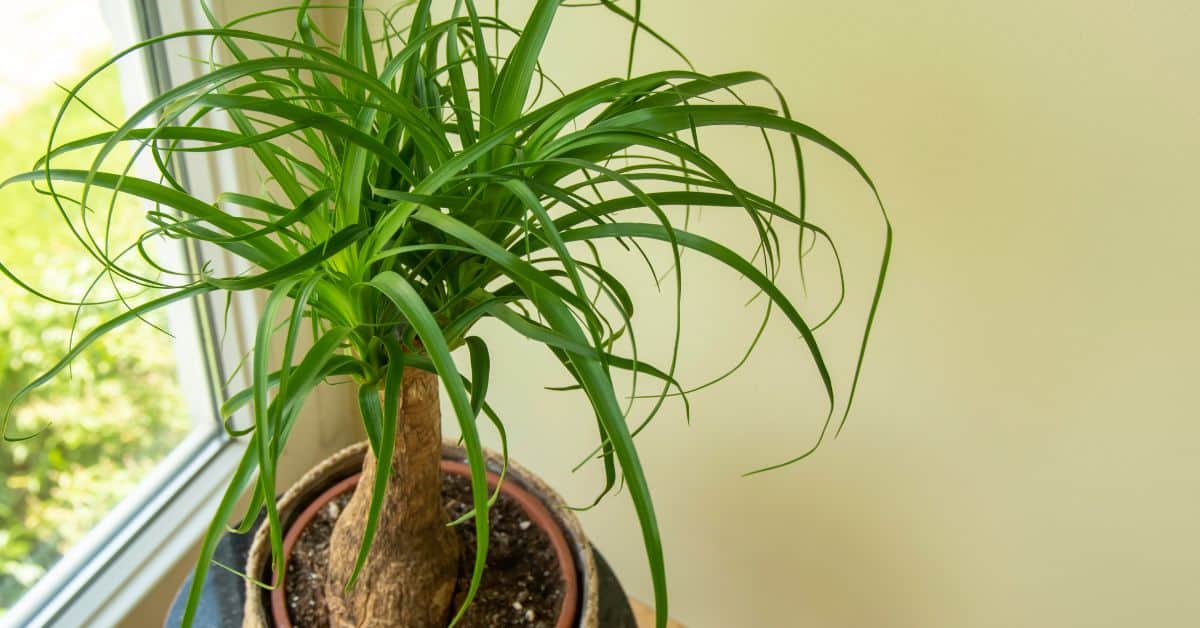
4. Parlor Palm
Parlor Palm (Chamaedorea elegans) is a popular houseplant that can also be safely kept as a pet-friendly plant. It is easy to care for, requiring only a well-draining soil mix and moderate watering. This tropical plant will thrive in temperatures between 65 and 80 degrees Fahrenheit, with brighter light intensities in winter months.
To avoid the soil becoming overly wet, let the top inch of the soil dry out before watering. Although it does need regular watering, be careful to not overwater your Parlor Palm; this may cause root rot or other diseases.
Care guide:
Feeding your plant with a balanced fertilizer once per month during its active growing season will provide all essential nutrients for healthier growth. Lastly, brushing off dust accumulations from the leaves when needed ensures that photosynthesis can occur efficiently, promoting healthy new growth.
With proper care and attention, you should have an attractive, pet-safe houseplant in no time!
5. Calathea Orbifolia
Calathea Orbifolia is an excellent choice for pet owners who wish to add some greenery to their homes. It has broad, arching dark green leaves with bright stripes of yellow, adding decorative appeal and cheering up any space. This tropical plant loves moisture and high humidity and is easy to care for.
Care guide:
To start, the soil should be kept moist but not soggy, with a light misting twice a week ideal for maintaining humidity levels. Bright indirect light is also important but avoid direct sunlight as it can burn the leaves.
Lastly, fertilizing twice a year will help keep your plant in optimal health yet too much fertilizer can cause burnt leaves so it’s best to stick to specific instructions found on the fertilizer packaging.
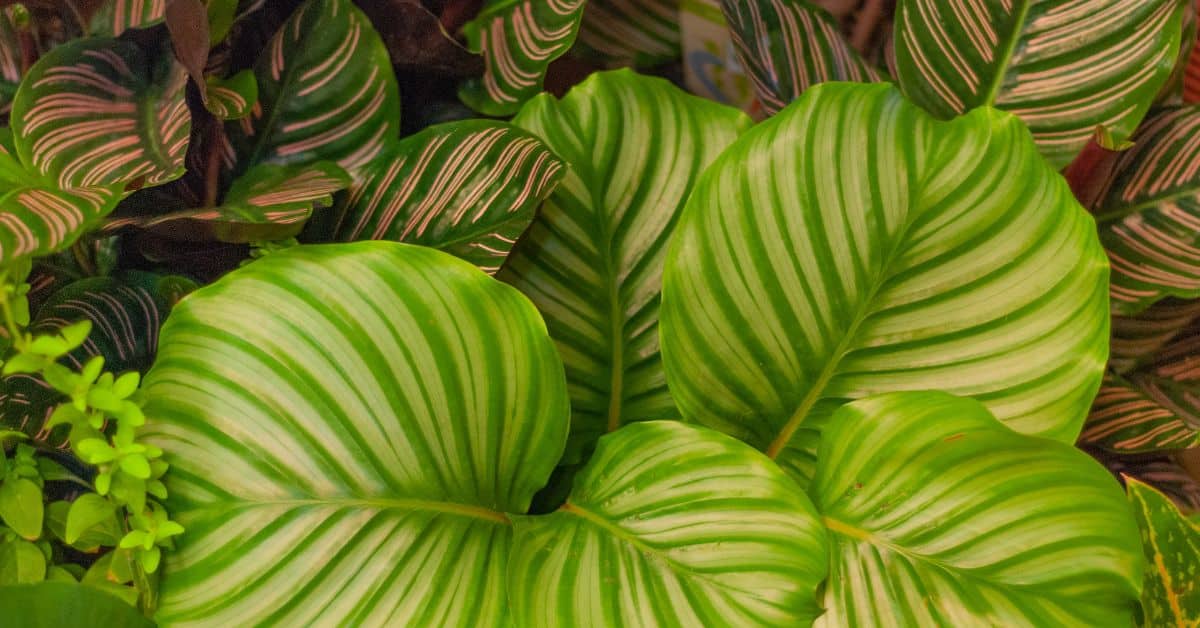
6. Succulents
Succulents are among the trendiest houseplants to have, and the good news is that they’re safe for cats, dogs, and other pets. To ensure your pet stays healthy and happy while enjoying its new green friends, you’ll want to practice the appropriate care techniques. Succulents need plenty of indirect light, so place them in a brightly lit spot.
Care guide:
Make sure to water them regularly but don’t go overboard; aim to keep the topsoil slightly moist without overwatering. Fertilize once per month with a diluted solution to provide them with an extra nutritional boost.
It’s also important to regularly clean their leaves so pollutants such as dust won’t interfere with their ability to soak up sunlight through photosynthesis. Keeping these care tips in mind will ensure your pet-safe succulents thrive!
7 African Violet
African Violets are low-maintenance plants that can purify your air and add a beautiful living accent to any home. They can thrive indoors as long as they get enough natural or artificial light and should be watered often with lukewarm water.
To provide the best environment for growth, the soil should be loose yet moist and never allowed to dry out completely.
Care guide:
Discard any excess water from their pots after watering. With proper care, African Violets can bloom with delicate lavender-purple blossoms year-round and make a great addition to an indoor garden. Plus, it’s pet-friendly—safe to have around cats and dogs!
8. Bird’s Nest Fern
The Bird’s Nest Fern is an excellent, pet-safe houseplant. Suited to low-light situations, it has fronds that are generously sized and have a soft, enchanting texture. A great plus is that the Plant doesn’t need daily watering if watered too much or too often it may become susceptible to foliar disease.
Care guide:
To care for it properly let the soil dry out before watering it thoroughly; water less in the winter season as well. Fertilizing should only be done between spring and autumn with a balanced fertilizer diluted by half. Pruning yellow or brown fronds will help to keep the plant looking its best. With proper care, the fern can be allowed to grow up to three or four feet over time!
9. Gloxinia
Gloxinia is a flowering houseplant native to South America that is gaining traction as one of the best plants for pet-friendly homes. It is a low-maintenance plant, which can provide lush foliage and beautiful blooms with some basic care. Gloxinia should be grown in indirect sunlight, but for the flowers to burst into bloom it needs long hours of light each day.
Care guide:
Water when the soil is dry, saturating it completely until water trickles from the pot’s drainage holes. During its growing season, Gloxinia should be regularly fertilized with an organic liquid fertilizer mix about every two weeks.
After its lovely blooms fade away, reduce watering slightly, and refrain from feeding it during this period of dormancy. As long as these simple tips are followed, Gloxinia will surely add some striking color to your pet-friendly home decor!
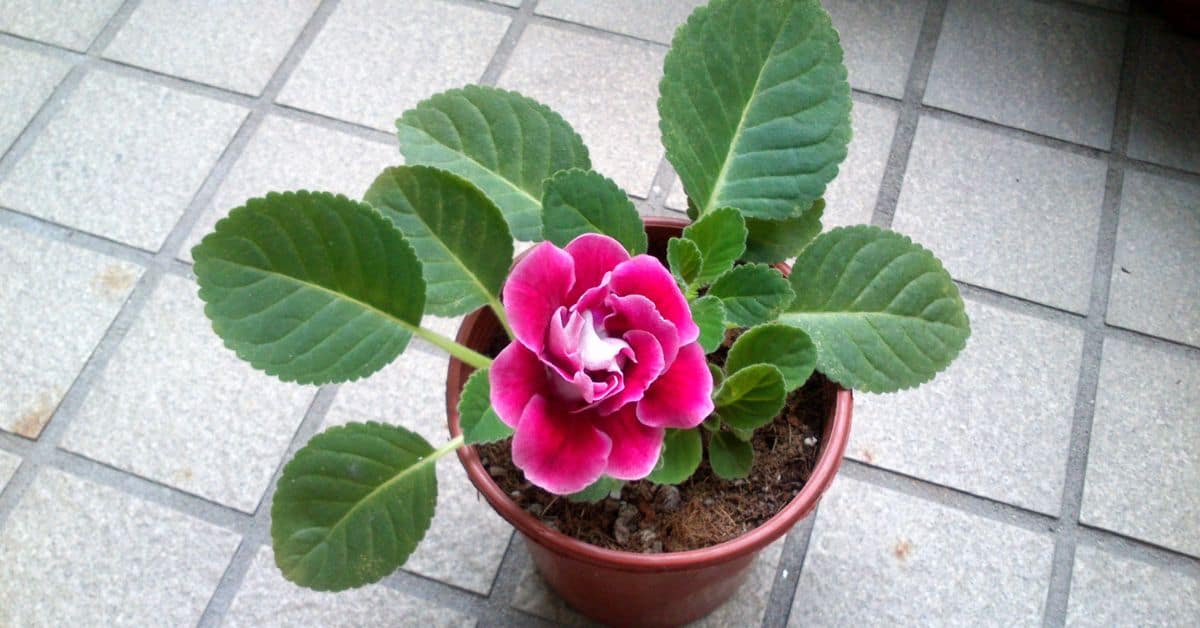
10. Baby’s Tears
Baby’s Tears, or Soleirolia soleirollii, is an attractive houseplant that pet owners can enjoy without worry. Tough and resilient, it requires little maintenance and can survive in indirect sunlight indoors.
When growing Baby’s Tears as a houseplant it needs to be kept moist during the spring and summer months; during the winter months, water lightly but with good drainage.
Care guide:
Prune back frequently to encourage branching growth and keep surfaces free of plantlets for easier watering and maintenance. This plant will also help reduce toxins in your home.
Thanks to its ferny foliage that traps pollutants like xylene and formaldehyde found in furniture, carpets, wooden cabinets, and other household materials. A family-friendly houseplant, Baby’s Tears is safe for cats and dogs and can add year-round beauty anywhere inside your home.
11. Chinese Money Plant
The Chinese Money Plant (or Pilea peperomioides) is a unique and majestic houseplant that can make a stunning impression in any home. Not only is it an attractive addition to any room, but it’s also one of the safest houseplants for pet owners. Generally speaking, these plants are hardy species and don’t require a lot of attention.
Care guide:
It’s important to water the Chinese Money Plant regularly but be mindful not to overwater – allowing the soil to become completely dry before applying more water. For proper lighting, the plant will do best indoors near a bright windowsill, though avoid putting it in direct sunlight.
Lastly, fertilizing once every two months should help feed your plant so it continues to thrive. With just a little bit of effort and patience, you can have an eye-catching piece that looks fantastic and keeps both you and your pet safe.
12. Venus Fly Trap
The Venus Fly Trap is one of the most iconic houseplants, beloved for its impressive (and oftentimes comical) ability to trap bugs! Though they can be tricky to get right as far as care goes, these carnivorous plants are surprisingly safe for animals.
When well-maintained, the Venus Flytrap will thrive in bright indirect light and requires a soil mix crafted from peat moss and sand.
Care guide:
Be sure to keep the soil moist by misting it often with distilled water – don’t allow it to dry out too much or sit in standing water. If you’re looking for an interesting and conversation-inducing conversation starter that is both pet-friendly and visually striking, the Venus Fly Trap might be just what you’re looking for!
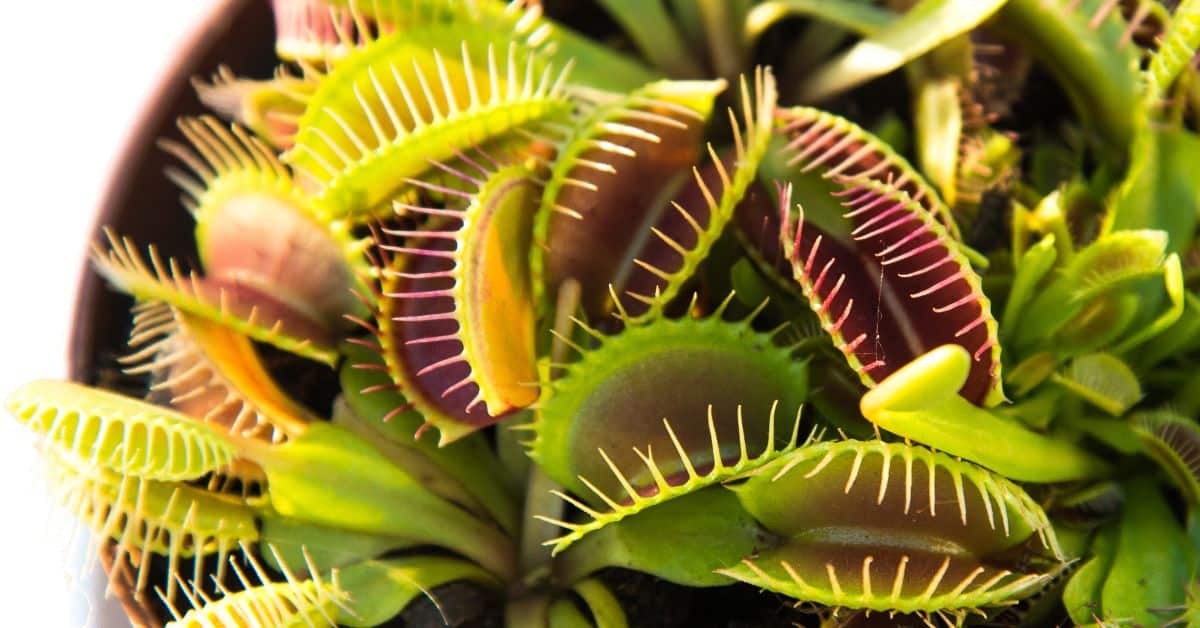
Tips for Keeping Your Pet-Friendly Plants Healthy
Caring for pet-friendly house plants does not have to be a difficult task. In fact, with just a few simple steps, you can keep your plants healthy and thriving even in the presence of pets. Here are some of our top tips for keeping your pet-friendly plants healthy:
- When buying pet-friendly house plants, make sure to read the label and research any potential toxicity issues before bringing them into your home, especially if you have cats or dogs that may come into contact with them.
- Different types of houseplants need different amounts of light and water so make sure to research the right placement for each one to meet their needs best.
- Create a schedule for watering, pruning, and fertilizing your house plants to ensure that they remain healthy and happy. It’s also important to watch out for signs of pests such as aphids or mealybugs that can attack tender leaves or buds and take steps to prevent future infestations should they occur.
- Keeping things clean around your plant is essential to ensure your pet doesn’t accidentally ingest any potentially harmful chemicals or toxins that could be transferred through soil contact or grooming after being outside among other plants.
- If you notice any changes in behavior from either yourself or your pet after bringing home new houseplants, it could mean that something isn’t quite right, so it’s important to take quick action by removing the plant if necessary, changing its location, or consulting with an expert on how best to remedy the situation quickly and safely.
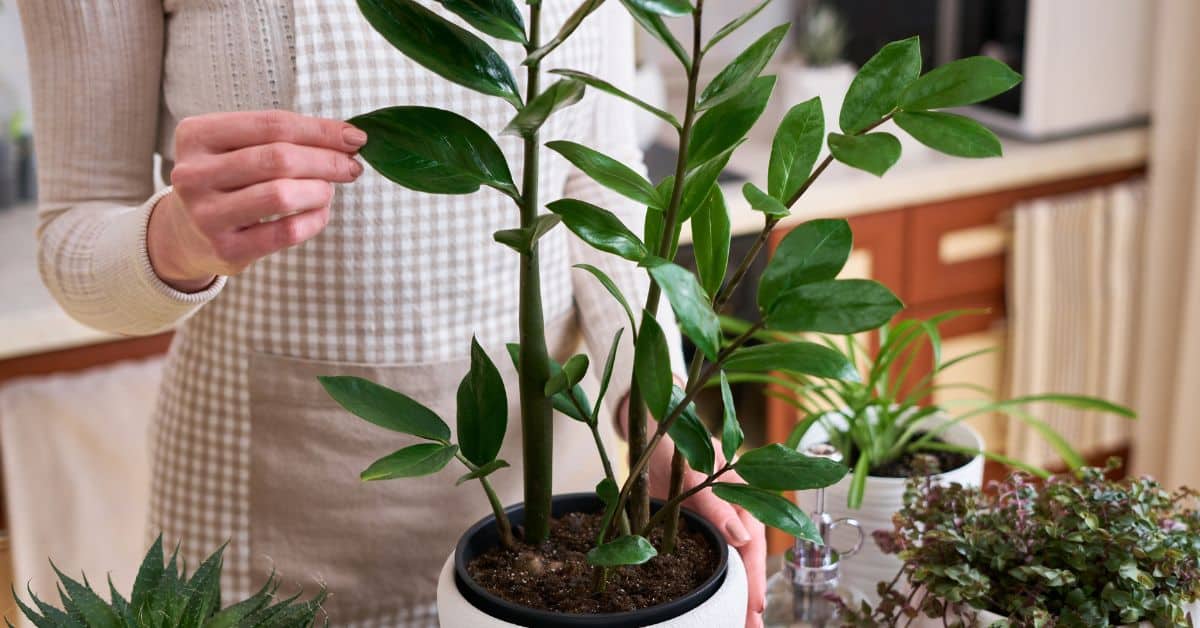
Conclusion
Bringing pet-friendly houseplants into your home can be an excellent way to add life and beauty to any space, while also keeping both you and your pets safe. With just a few easy steps, you can ensure that your plants remain healthy and beautiful all year round.
From ferns to succulents, there are plenty of pet-friendly plants available that are sure to suit any style and make a great addition to your home. With the right care, you’ll be able to enjoy the beauty of these plants while also creating a safe environment for your pets. So what are you waiting for? Go out there and start sprucing up your indoor oasis today!






